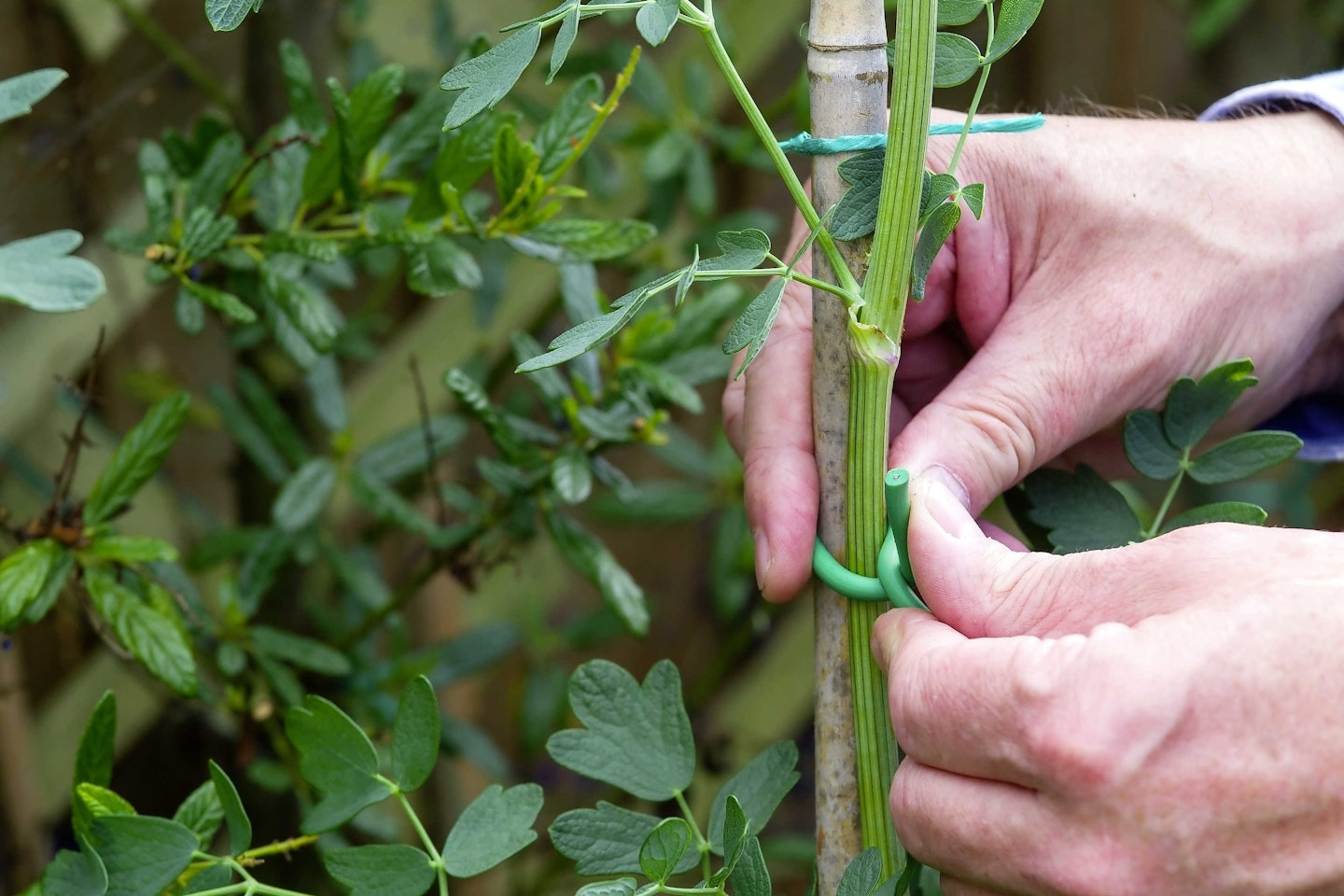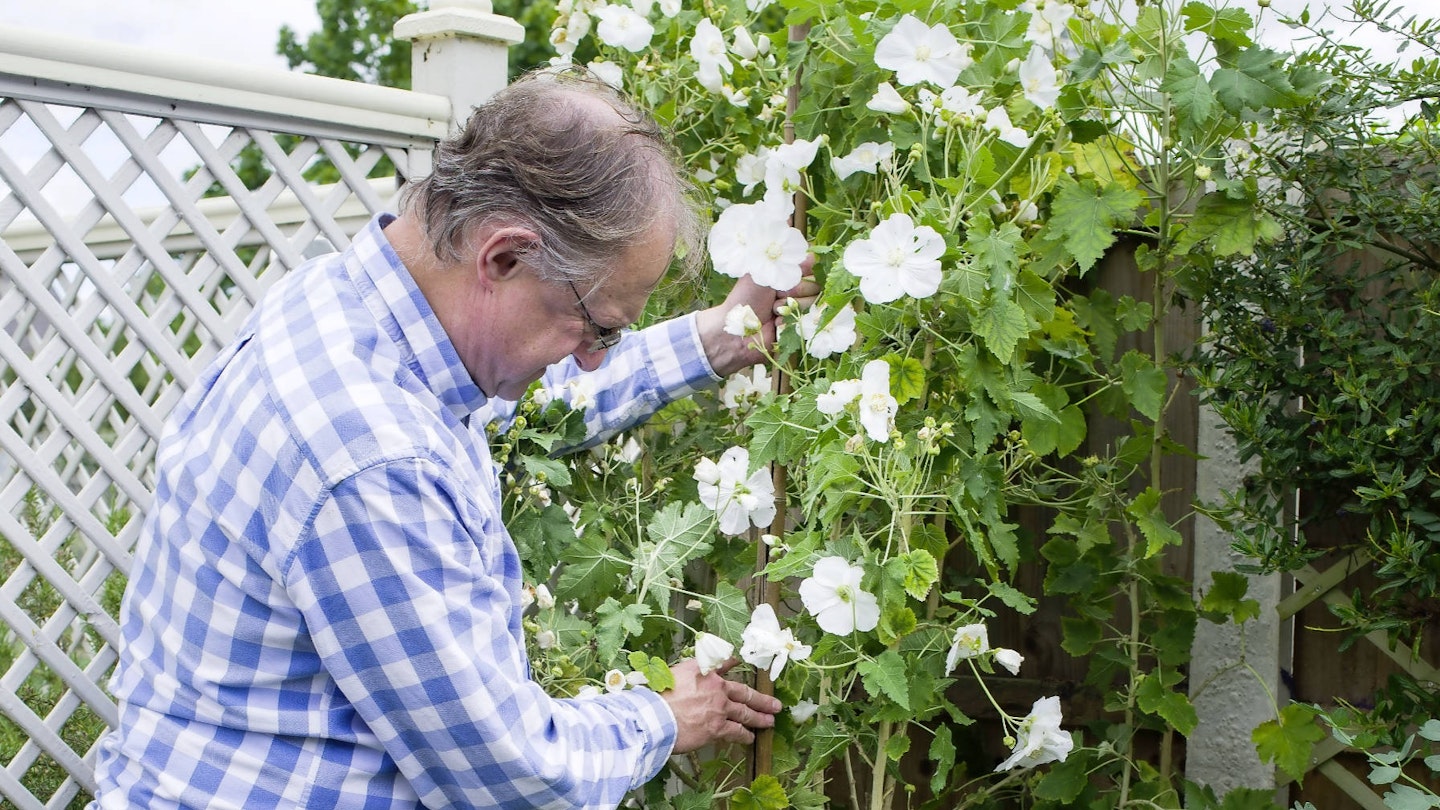Blustery winds can strike even in the middle of the warmest of summers - they always seem to come as a surprise and bash our precious plants every which way!
The plants can get jostled and knocked over, so you may have to keep an eye on them and check for damage.
There’s the physical damage of collapsing and being uprooted – some tall plants will need tying in, staking and tucking upright back in the soil again. Check for root or stem damage, and prune out any obviously impaired areas.
There’s also wind-scorched leaves, which appear crumpled or browning that have lost moisture. It pays to water and feed your plants well anyway, but particularly after a heavily windy couple of days.
The Abutilon vitifolium, pictured, is a beautiful upright shrub for a sunny spot, with superb flowers in early summer,
But it needs shelter from heavy, drying winds – in this case it was almost uprooted and collapsed on the border! It’s being gently put back upright, and staked really well with thick canes.
If some plants suddenly lose their new leaves or buds, this may be a factor of wind damage, too. Keep plants watered, fed and sheltered if this is the case.
In many ways there’s nothing you can do to prevent wind damage, but there are precautions and post-damage steps to try and help your plants get back on their feet again.
GN Recommends – Four ways to cope with wind damage

1) Think about plant choice
Are your plants hardy and don’t mind exposure? Evergreens such as camellias are prone to wind scorch.
2) Stake well
Plants such as tall thalictrums, sunflowers or delphiniums, for example, need a bit of help keeping upright.
3) Make the chop
Cut down collapsed and irreparable herbaceous plants or shrubs and prune out damaged stems on trees.
4) Earth up tall veg
Crops such as sweetcorn can be earthed up at their bases so they stand stronger and are less likely to fall.
